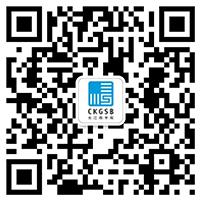The CKGSB Business Conditions Index Chart
Business Conditions Index (BCI)
A set of forward-looking diffusion indicators. The index takes 50 as its threshold, so a value above 50 means that the variable that the index measures is expected to increase, while a value below 50 means that the variable is expected to fall. The CKGSB BCI uses the same methodology as the PMI index.
Profit
Corporate profit index is a sub-index of the BCI and measures future prospects
Inventory
Inventory index is a sub-index of the BCI and measures future prospects
Total Costs
Measure the business’ overall operation costs
Consumer Goods Prices
Measures the average change in prices over time that consumers pay for a basket of goods and services. CPI is the most widely used measure of inflation and, by proxy, of the effectiveness of the government’s economic policy.
Employment
Indicates whether businesses are recruiting in the next six months
Sales
Corporate sales index is a sub-index of the BCI and measures future prospects
Financing
Corporate financing index is a sub-index of the BCI and measures current climate
Labor Costs
Labor costs index measure forecasts for the next six months
Investment
Indicates whether businesses are making investments in the next six months
Intermediate Goods Prices
Measures what businesses pay for inputs.
Business Competitiveness
This index records our sample’s relative strength in the marketplace, based on self-reported competitiveness compared with their respective industries peers.
About the CKGSB
Business Conditions Index
In June 2011, the CKGSB Case Center and the Center for Economic Research initiated a project to gauge the business sentiment of executives about the macro-economic environment in China – called an index of business conditions. Under the direction of Professor Li Wei, the two research centers designed and tested the BCI survey in July 2011. In September 2011, the first surveys were distributed and first results computed, and has been published monthly ever since. The CKGSB Business Conditions Index is a set of forward-looking, diffusion indices. The index takes 50 as its threshold, so an index value above 50 means that the variable that the index measures is expected to increase, while an index value below 50 means that the variable is expected to fall. The CKGSB BCI thus uses the same methodology as the PMI index.
The survey asks roughly 300+ senior executives of companies whether their main products are for consumers or non-consumers, and then asks how they think product prices will change in the next six months. Based on survey responses, we have been able to report expectant changes in consumer and producer prices, as well as a variety of other related indices. Companies surveyed are across different sectors, including consumer, industrial, real estate, manufacturing and staple.
Celebrating 14 Years of the CKGSB Business Conditions Index
Since China launched its reform and opening-up in 1978, the economy has sustained more than four decades of rapid growth. By market exchange rates, China is now the world’s second-largest economy; by purchasing power parity, it is the largest.
China’s economy is complex, layered, and often misunderstood. Why does China so often face weak demand? Is it exporting deflation to the rest of the world? Answering such questions requires first-hand data from business leaders.
Read moreThis was the impetus behind the CKGSB Business Conditions Index (BCI). Leveraging its access to China’s most elite business network of 23,000 executives, CKGSB set out to capture their short-term expectations for business conditions through a regular survey. The project was spearheaded by Li Wei, Professor of Economics and Associate Dean at CKGSB, who also directs the school’s Case Center and Big Data Economic Research Center. His vision was to build a rare, if not unique, index of Chinese business sentiment.
The first BCI survey was launched in September 2011, following months of questionnaire design and testing. From then until September 2025, it has conducted 166 rounds of surveys, releasing 161 sets of results covering May 2012 through September 2025. Each month, hundreds of business leaders from China’s private sector—which is the backbone of its economy—have provided real-time insights on sales, profits, financing, inventories, and investment plans—offering an unprecedented window into what is really happening on the ground.
The BCI is a public-interest initiative. Its data is available free of charge and reflects only the survey results, independent of outside influence. The sole reward for its production has been recognition from the broader community.
Now in its 14th year, the BCI remains a vital resource for understanding China’s economy. CKGSB is committed to continuing this important initiative and welcomes feedback that can sharpen its insights. For policymakers, executives, and investors alike, it provides something that the headlines cannot: a direct line to the business sentiment driving the world’s second-largest economy.
Because the most valuable insights aren’t in the headlines—they’re in the data behind them.
Latest Survey Results
In October 2025, the BCI registered 52.0, representing a modest increase from the 51.1 in September 2025.
For more information on the BCI, or to arrange an interview with Professor Li Wei, please email joseph@ckgsb.edu.cn







